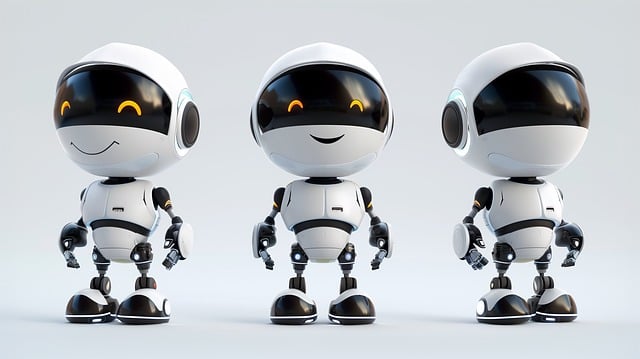Chatbots utilize Natural Language Processing (NLP) and Machine Learning algorithms to interpret user input and generate contextually relevant responses, enhancing user experiences. Their backend technology blends AI and NLP, processing vast datasets for accurate intent understanding and semantic meaning generation. Continuous advancements in chatbot AI, driven by machine learning, allow them to handle complex queries with improved accuracy, making chatbot AI a dynamic and evolving field.
Chatbots have transformed how we interact with technology, offering instant, 24/7 support across various platforms. But how do these conversational AI systems work? This article delves into the intricacies of chatbot AI, exploring key components like natural language processing (NLP) and machine learning. We’ll break down the process from decoding user input to powering seamless conversational experiences, providing a comprehensive understanding of the technology behind these intelligent virtual assistants.
- Understanding Chatbot AI: The Basics
- Natural Language Processing: Decoding User Input
- Machine Learning and Training Chatbots
- Powering Conversational Experiences: Backend Technology
Understanding Chatbot AI: The Basics

Chatbots, powered by artificial intelligence (AI), have transformed the way we interact with technology. At their core, chatbots rely on natural language processing (NLP) to understand and interpret human language. This AI-driven capability allows them to engage in conversations, answer queries, and perform tasks much like a human would.
The basic functioning involves sophisticated algorithms that analyze user inputs, break them down into components, and match them with relevant responses from a vast database. Machine learning further enhances their intelligence by enabling chatbots to learn and improve over time, adapting to new patterns and user preferences. This dynamic evolution ensures chatbots remain effective and efficient tools in various industries, providing excellent customer service and streamlining processes.
Natural Language Processing: Decoding User Input

Chatbots rely heavily on Natural Language Processing (NLP), a core component of artificial intelligence, to understand and interpret user input. NLP allows chatbots to decode human language, enabling them to comprehend the intent behind messages and extract relevant information. This process involves several techniques, such as tokenization, where text is broken down into meaningful words or tokens, and part-of-speech tagging, which identifies the grammatical structure and meaning of each token.
By employing NLP, chatbots can analyze user queries, identify keywords, and contextual cues to determine the user’s intent. This enables them to generate appropriate responses that mimic human-like conversations. The continuous advancements in chatbot AI are pushing these systems to become more sophisticated, allowing them to handle a wider range of complex queries and provide more accurate and relevant answers.
Machine Learning and Training Chatbots

Machine learning plays a pivotal role in developing intelligent chatbots. These AI models are trained using vast datasets, often consisting of human interactions and conversations. Through advanced algorithms, the chatbot learns to recognize patterns, understand context, and generate appropriate responses. The training process involves feeding the model numerous examples, allowing it to build its knowledge base and improve accuracy over time.
The power of machine learning lies in its ability to adapt and evolve. As chatbots engage with more users, they can refine their understanding by analyzing user inputs and feedback. This continuous learning ensures that chatbot AI remains up-to-date, providing more accurate and contextually relevant answers, thereby enhancing the overall user experience.
Powering Conversational Experiences: Backend Technology

The backend technology powering chatbots is a fascinating world of artificial intelligence (AI) and natural language processing (NLP). At its core, a chatbot relies on sophisticated algorithms and machine learning models to understand and generate human-like conversations. These models are trained on vast datasets, often containing millions of conversations or text documents, allowing them to learn patterns, context, and semantic meanings.
When a user interacts with a chatbot, the AI system processes the input text, breaking it down into meaningful components. It identifies keywords, phrases, and intents, using this information to determine the appropriate response. This process involves complex calculations and comparisons against the trained models, enabling chatbots to provide relevant, contextually aware answers or prompts. The real-time nature of these interactions requires lightning-fast computational power, making efficient backend infrastructure crucial for delivering seamless conversational experiences.
